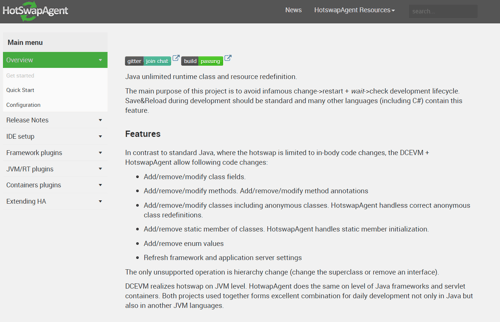New Feature in Payara Platform 5.182: MicroProfile REST Client
Published on 16 Aug 2018
by Ondro Mihályi
Topics:
Payara Micro,
REST,
MicroProfile,
Payara Server 5
|
2 Comments
The 5.182 release of Payara Server & Payara Micro (Payara Platform) brings in MicroProfile 1.3. This introduces a couple of updates to some existing specifications, and three new ones: OpenTracing, OpenAPI, and Type-safe REST Client. In this blog, I’ll be covering our implementation of the Type-safe REST Client.
Be Reactive and Micro with a MicroProfile Stack
Published on 18 Jun 2018
by Ondro Mihályi
Topics:
Payara Micro,
Microservices,
MicroProfile
|
0 Comments
A Step-by-Step Guide from Traditional Java EE to Reactive Microservice Design
Published on 18 Jun 2018
by Ondro Mihályi
Topics:
Java EE,
Microservices
|
4 Comments
A workshop given at JPrime conference in May 2018.
Have you wondered how you can improve the design of your applications to improve its performance? You probably heard that reactive design can help achieve better response time and make your applications more flexible. But you’re asking: Do I need to rewrite my applications from scratch? Do I need to learn a new framework for all that? The answer is no, especially if your application is built on top of Java EE and Java 8.
Building Your Next Microservice With Eclipse MicroProfile
Published on 23 Apr 2018
by Ondro Mihályi
Topics:
Payara Micro,
Microservices,
MicroProfile
|
2 Comments
Flexibility First - Payara Docker Images Allow a Completely Custom Start-up Configuration
Published on 03 Apr 2018
by Ondro Mihályi
Topics:
Docker,
Payara Server
|
6 Comments
We work hard to make Payara Server robust, reliable, and innovative so that it's perfect for production deployments. But we never forget about the users and developers. For them, we target flexibility and ease of use in every new feature we add and every tool in the ecosystem we maintain. Our Payara Docker images are an example of it and we're happy about the positive feedback from the user community we receive, as well as the constructive suggestions that help us improve user experience in the future.
Recent Additions in MicroProfile Config 1.1
Published on 22 Feb 2018
by Ondro Mihályi
Topics:
Payara Micro,
Payara Server Basics,
MicroProfile
|
0 Comments
Configuration is an important aspect of programming. However, a standard approach to it has been missing in Java for a long time. A year ago, the MicroProfile project decided to change that. I'm glad I could be part of it and help design the new API. One year later, a common configuration API aiming to set a standard is a reality, with several released versions and multiple projects that provide it. Payara Server and Payara Micro have supported MicroProfile Config API since version 4.1.2.173. We added support for Config 1.1 in version 4.1.2.174 and completed the support for all Eclipse MicroProfile 1.2 features in version 4.1.2.181. So let's summarize what's new since Config 1.0.
Using HotswapAgent to Speed up Development
Published on 18 Oct 2017
by Ondro Mihályi
Topics:
How-to,
NetBeans,
JVM,
DevOps
|
15 Comments
As a Java EE developer, I sometimes envy how fast it’s possible to see the result of a code change in a running application with interpreted languages like PHP or JavaScript. With Java, it’s always necessary to rebuild the source code in bytecode, which can be then safely updated only by restarting the whole application. And all developers know that restoring the desired state of the application after a fresh restart takes time and is tedious.
'5 ways to improve your Java EE applications in reactive way' - Ondrej Mihalyi at GeeCON 2017
Published on 30 Aug 2017
by Ondro Mihályi
Topics:
Java EE,
Payara Micro,
Microservices,
JVM
|
0 Comments
Have you ever wondered how you can improve the performance of your applications under high load? You've probably heard that reactive design can help meet better response time and make your applications more flexible. In this presentation, I will show that you don’t need to rewrite your Java EE applications from scratch to achieve that!
Oracle Code Prague - Impressions & Videos
Published on 30 May 2017
by Ondro Mihályi
Topics:
Java EE
|
0 Comments
At the end of April I had a pleasure to speak at the Oracle Code event in Prague.
Payara Server 171 - Expanded Request Tracing
Published on 29 Mar 2017
by Ondro Mihályi
Topics:
What's New,
diagnostics,
request tracing
|
2 Comments
Since being introduced as a technical preview, the Request Tracing Service has been improved and polished to meet production quality requirements. In the latest Payara Server version 171, it was extended to allow tracing of more request types and more events that happen during the requests. It can also remember traces of the slowest 20 requests for viewing them later, though the number stored can be increased or decreased.








